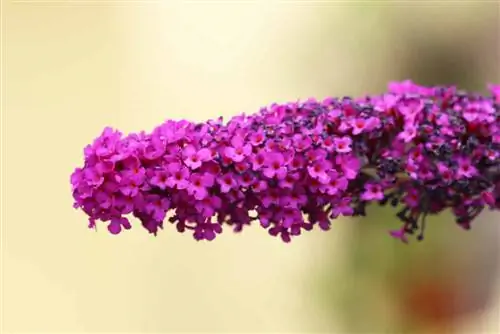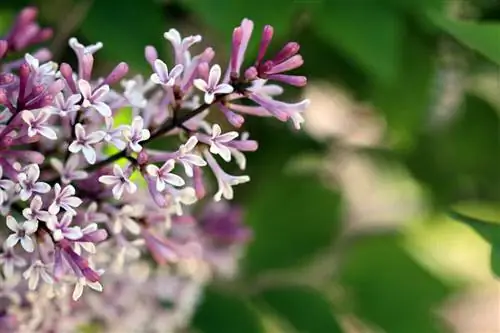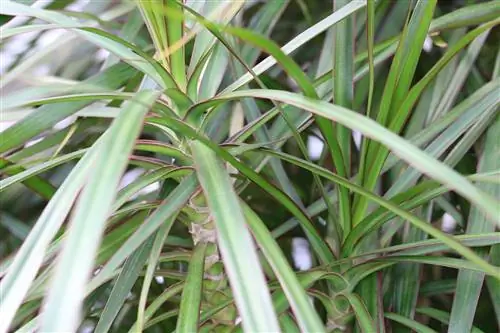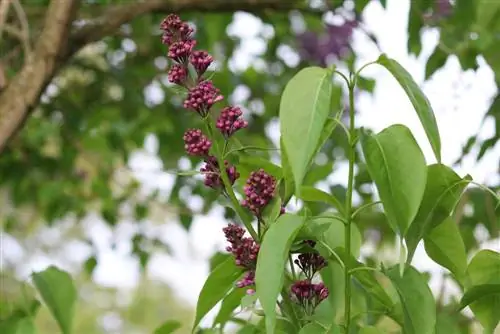- Author admin [email protected].
- Public 2023-12-17 03:39.
- Last modified 2025-01-24 12:45.
Lavishly blooming butterfly lilacs characterize summer landscapes and shine in gardens and parks. The obvious omnipresence raises the question among concerned parents and pet owners as to whether buddleia poses a toxic threat. This guide provides a practical insight into whether and to what extent Buddleja davidii is permeated with toxic substances. Find out here the level of danger for people and animals with tips for the correct behavior in an emergency.
Low toxic in all parts
Buddleia contains a cocktail of glycosides and saponins, which are found in all parts of the plant. The highest concentration of toxic ingredients is found in leaves and seeds. Among other things, it is the glycoside catalpol, which has the GHS hazardous substance label. In addition, Aucubin, a common toxin in Mother Nature's kingdom, flows through the pathways of butterfly lilac.

Outside the flowering period, the deciduous leaves of a buddleia can be identified by their lanceolate shape up to 25 centimeters long and 7 centimeters wide. The short-stemmed foliage is arranged oppositely on tomentose, hairy shoots. It is characterized by a dark green upper surface and a grey-felty underside.
The poisonous seeds are contained in brown, two-lobed capsule fruits that form from pollinated flower spikes. A capsule fruit is 5 to 9 millimeters long and has a diameter of 1.5 to 2 millimeters. The seeds are chip-shaped, 2 to 4 millimeters long, with a diameter of 0.5 millimeters.
Tip:
The danger of poisonous buddleia seeds in the garden is averted if you clean out withered flowers in a timely manner. Cut off spent panicles just above the next pair of he althy leaves. A positive side effect is a decorative bloom.
Toxic to humans and animals
Glycosides and saponins in buddleia pose a he alth risk to humans and animals. Children and sensitive adults who intentionally or unintentionally consume leaves, flowers or seeds are primarily affected. Victims of the toxic substances can be all kinds of pets. The wide range of endangered animals extends from dogs, cats, hamsters, rabbits and budgies to grazing animals such as sheep, goats, cows and horses. Experts in BUND (Association for the Environment and Nature Conservation Germany e. V.) are convinced that butterflies absorb toxins from the nectar on buddleia. As a result of the resulting disorientation, the butterflies become easy victims for hungry birds.
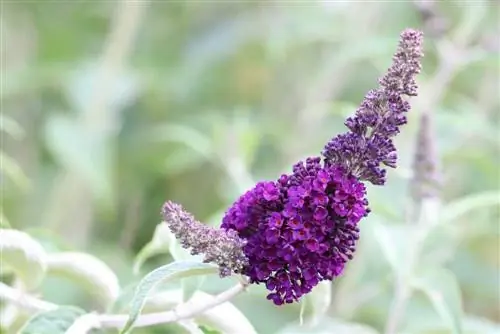
There is currently a lack of reliable information as to the amount above which the consumption of plant parts of a butterfly lilac is questionable. Practice has proven that there is a close connection between body weight and the amount consumed. Furthermore, the consequences are directly related to the type of plant parts eaten. Flowers that have just opened pose a significantly lower risk of poisoning than fully ripened capsule fruits with countless seeds.
Symptoms in people
The following symptoms indicate poisoning with buddleia:
- Nausea
- Stomach cramps
- Vomiting
If the symptoms mentioned occur massively, circulatory problems can be expected, such as dizziness, disorientation and even loss of consciousness.
Help measures
In the event of poisoning with buddleia, it is important that you remain calm. Call the ambulance and emergency doctor. Until they arrive, carry out these help measures:
- Remove plant residues from the mouth and throat
- Give water, tea or juice to the child or adult in small sips
- Important: do not induce vomiting, do not give s alt water, do not give milk to drink
Medical charcoal is the classic first aid remedy for poisoning. Experts at the Bonn Poison Center strongly recommend that dosage and administration be left to medical staff. Doctors can decide on the right treatment more quickly and reliably if they can inspect the poisonous plant parts that have been consumed and examine them in the laboratory. Be sure to keep any plant debris that you have removed from your mouth.
Note:
Regardless of the low toxic content, sniffing and cutting buddleia are harmless. Don't let the toxins it contains stop you from enjoying the seductive scent of butterfly lilac. You can also devote yourself to the important pruning in spring without any worries.
Symptoms in animals
If you catch an animal eating buddleia, it is rarely possible to determine how much poisonous plant parts have already been ingested. The following symptoms leave no doubt about poisoning:
- Increased salivation
- Disorientation, staggering and staggering
- Vomiting, diarrhea
- Trembling, cramps
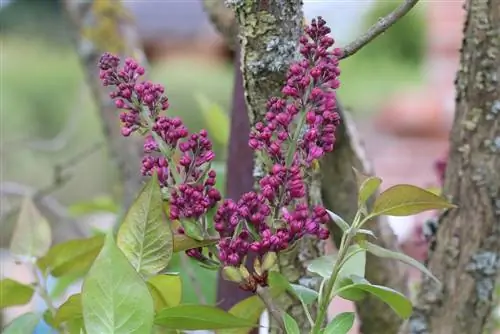
In grazing animals, symptoms of poisoning often manifest themselves in the form of colic. Especially in horses, colic is an important indication of butterfly lilac poisoning because they cannot vomit. Beforehand, the affected animals draw attention to themselves through unusually strong thirst and unwillingness to eat.
Help measures
If your pets or pasture animals are victims of plant poisoning, please do not waste valuable time on risky experiments. A poisoned animal is best cared for in the capable hands of an experienced veterinarian. Before you head to the nearest veterinary practice or wait for the veterinarian to arrive, focus on these help measures:
- Drawing visible plant remains on the mouth
- Pack in a plastic bag and take with you
- Caution: do not induce vomiting
Have a calming effect on the suffering animal and also keep calm yourself. When a dog, cat, hamster or bird hears your voice, the awareness that they are not alone alleviates the symptoms.

